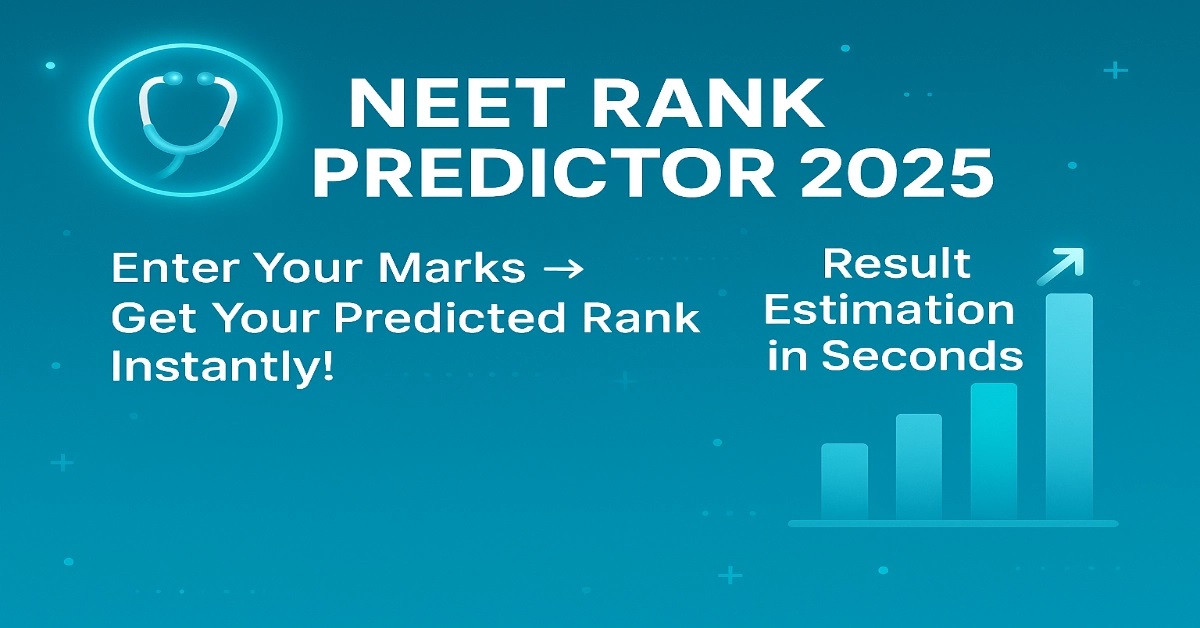

The National Testing Agency (NTA) conducts the NEET (National Eligibility cum Entrance Test) each year as a national-level entrance exam for students seeking admission to undergraduate medical courses like MBBS, BDS, AYUSH, and others in India. After appearing for the NEET 2025 exam, students are naturally eager to estimate how many marks they might score and what rank they can expect. This is where the NEET Rank Predictor 2025 becomes an essential tool for providing quick and insightful estimations.
The NEET Rank Predictor is a data-driven online tool that assists NEET aspirants in estimating their All India Rank (AIR) based on the marks they expect to score in the exam. This prediction is made by analyzing past years’ trends, cut-off data, and rank distributions from various medical colleges across the country. To use the tool, students simply input their anticipated NEET score, calculated with the help of official or unofficial answer keys, along with basic details such as category and domicile. The tool then delivers an approximate AIR, giving candidates a clearer view of their position in the competitive admission process.
The primary purpose of the NEET Rank Predictor 2025 is to ease the anxiety and stress that candidates often face after the examination. The waiting period for results can be nerve-wracking, especially for students uncertain about their performance and future admissions. By giving a realistic estimate of their rank, the tool allows students to assess their chances of getting into top medical colleges, understand the level of competition, and make informed choices before the counseling process begins. It serves as an early guide, especially useful before the NEET 2025 results are officially released by NTA.
Once the exam is over, students face several questions:
The NEET Rank Predictor 2025 is a one-stop solution to all of these queries. It uses the most recent data and updates each year to generate a reliable estimate, allowing candidates to move forward with greater confidence.
To use the tool effectively, candidates should:
The prediction is based on historical cutoff trends, difficulty level of the current year's paper, and the number of test-takers. This gives a close approximation of the actual rank.
One major benefit of the NEET Rank Predictor is the early estimation of results. Students don’t have to anxiously wait for the official result to get a sense of how they performed. It allows them to start planning their next move almost immediately. Secondly, the tool helps in college selection by enabling students to shortlist institutions they are more likely to get into based on their predicted rank. Third, it provides a realistic understanding of the competition, helping students align their expectations during counseling. Finally, it serves as encouragement for better preparation. If the predicted rank isn’t satisfactory, candidates can use the insight to gear up for NEET 2026 or consider alternative courses in the medical field.
The period after the NEET exam is filled with anxiety, as students worry about their chances of securing a seat in government medical colleges, state quota admissions, or whether private institutions will be their only option. The NEET Rank Predictor 2025 helps mitigate this uncertainty. By offering an estimated AIR, it gives students a sense of control and direction. It allows them to mentally prepare for the counseling process or make a decision about future attempts with better clarity.
The NEET Rank Predictor 2025 is more than just a technical tool—it is a strategic assistant and a confidence booster. Whether students are aiming for top-tier medical colleges or exploring backup options, this tool provides much-needed guidance during a critical time. By using it, NEET aspirants can strategically plan their counseling choices, reduce confusion and anxiety, set achievable expectations, and take timely actions to adapt or improve their approach. As NEET continues to become more competitive every year, using intelligent tools like the rank predictor can significantly enhance a student’s ability to make smarter decisions about their future.